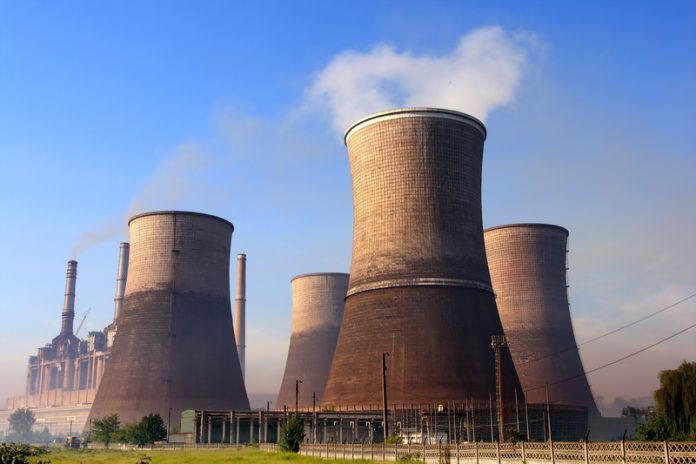David Taylor, Head of Corporate Affairs and Innovation at Flogas shares his views on the UK’s government’s Clean Growth Strategy and the extent to which this will help to reduce greenhouse gas emissions
The UK government is committed to reducing the nation’s greenhouse gas emissions and has launched the Clean Growth Strategy which outlines how it plans to build a lower-carbon future for the UK.
The Department for Business, Energy & Industrial Strategy (BEIS) compiled the 167-page report and, if you’d like to read it in full, you can download it here. However, if you’re pressed for time, business gas specialist Flogas has provided a neat summary of the strategy’s key points and what it will mean for homes and businesses nationwide.
How is the UK committed to climate change?
It’s important to understand which legislation brought about the Clean Growth Strategy.
In 2008, the Climate Change Act was introduced in the UK, making it the first nation worldwide to have self-imposed a legally binding carbon reduction target. Essentially, this aimed to reduce greenhouse gas emissions by a minimum of 80% by 2050 in comparison to levels in the 90s.
How close are we to meeting the target?
The great news is that, according to BEIS figures published in March 2017, the UK is on course to meet this target, with overall carbon emissions dropping by 42% since 1990. However, the government realises that much more work is needed and that is why proposals, including the Clean Growth Strategy, have been introduced.
How can the Clean Growth Strategy help us reach the target successfully?
To put it simply, the policies and proposals that are set out in the Clean Growth Strategy aim to speed up ‘clean growth’ in two ways: by decreasing emissions and by increasing economic growth. Bearing this in mind, the two objectives which are underpinning the strategy are:
- To achieve our domestic-level commitments at the lowest net cost possible for UK taxpayers, businesses and consumers and;
- To increase the economic and social benefits for the UK from this transition.
The government has committed to rolling out lower carbon processes, technologies and systems across the nation in a bid to turn its vision into a reality and plans to do so in the most cost-effective way possible for businesses and homes alike.
What are the key proposals of the Clean Growth Strategy?
The strategy’s proposals focus on the six key areas which are responsible for the UK’s carbon emissions. They are:
- Improving business and industry efficiency (25% of UK emissions);
- Accelerating the shift to low-carbon transport (24% of UK emissions);
- Delivering clean, smart, flexible power (21% of UK emissions);
- Enhancing the benefits and value of our natural resources (15% of UK emissions);
- Improving our homes (13% of UK emissions) and;
- Leading the public sector (2% of UK emissions).
You can read this executive summary for the full list of 50 pledges.
What does this mean for homes and businesses?
The government is providing support and encouragement to homes, businesses and industrial operations to successfully reduce their carbon footprint in several ways. Reassessing the fuels that we use for everyday jobs, including heating, cooking and powering industrial and manufacturing processes, while embracing cleaner, greener alternatives are high on the agenda.
This will not only mean that the uptake of renewable technologies, such as heat pumps, biomass boilers and solar panels will be boosted in the long term, but it will also favour the use of cleaner conventional fuels over those which are more polluting. For example, the strategy is planning to phase out high-carbon forms of fossil fuels, such as oil and coal, for off-grid homes and businesses. As the lowest-carbon conventional off-grid fuel, oil to liquefied petroleum gas (LPG) conversions will play a key part in replacing oil in the more rural areas of the country.
Natural gas will still be a popular choice for buildings that are connected to the mains network. Not only is it affordable and easily accessed, but it is also the lowest carbon fossil fuel available. Flogas, like other companies, anticipate that this part of its business will continue to go from strength to strength.
As an expert in the energy sector, we believe that the ‘green gas’ phenomenon which sees natural gases injected with a proportion of environmentally friendly biogas will be in high demand as the Clean Growth Strategy rolls out.
Reaction to the Clean Growth Strategy
It is positive to see there is plenty of support from key industry figures following the Clean Growth Strategy’s unveiling.
Lee Gannon, Managing Director of Flogas, says: “Through the publication of its Clean Growth Strategy, the government has made clear its intention to reduce carbon emissions from off-grid UK homes and businesses. Natural gas and LPG are affordable, versatile, widely available and – most importantly – emits significantly less carbon than the likes of coal and oil. As such, they continue to play a central role as the UK works towards cleaning up its energy landscape. We look forward to working alongside policymakers and wider industry stakeholders to make the Clean Growth Strategy the success that it deserves to be.”
Finally, we close with the thoughts of the trade body, Oil & Gas UK, who also support the strategy. Mike Tholen, its Upstream Policy Director, comments: “Oil & Gas UK welcomes the government’s commitment to technology in the strategy, especially with regards to carbon abatement measures such as carbon capture, usage and storage. Oil & Gas UK looks forward to working with the government to see how these technologies can further reduce emissions across the economy.”
David Taylor
Head of Corporate Affairs and Innovation
Flogas Britain Limited
Tel: +44 (0)7964 521 211
www.twitter.com/Flogas_Business






























